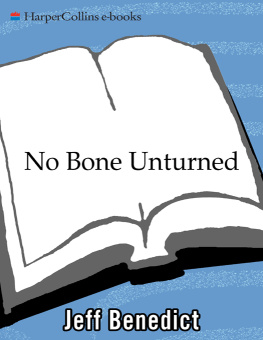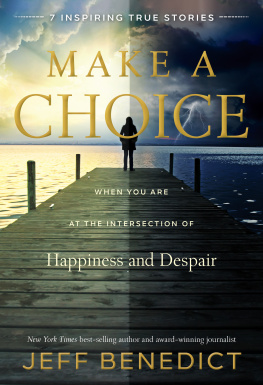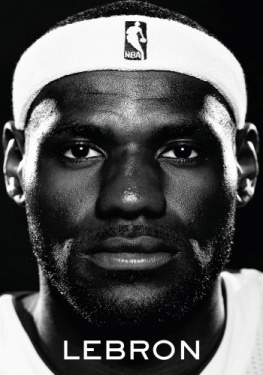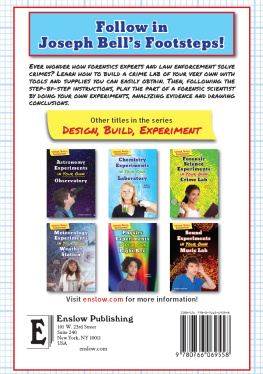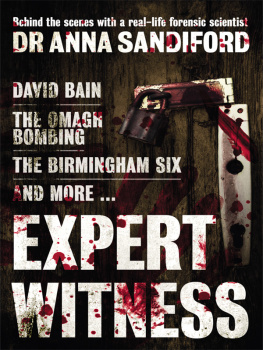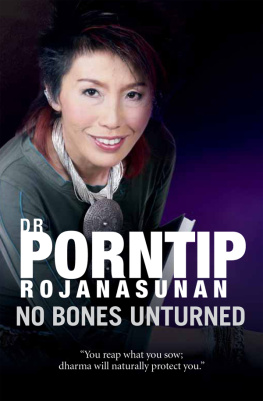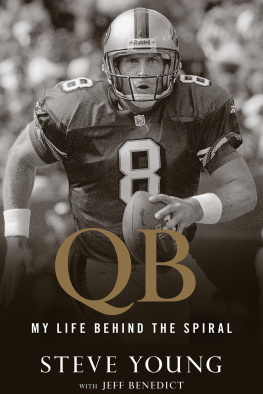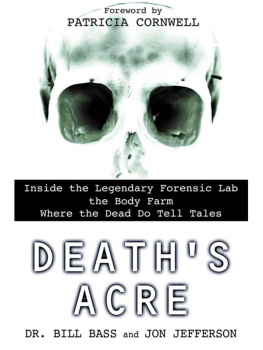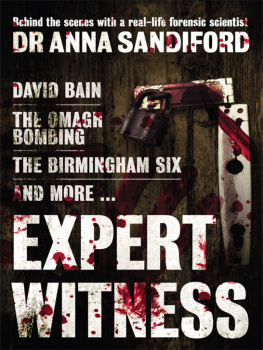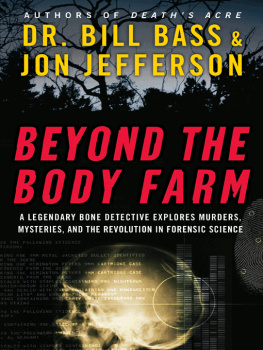Jeff Benedict - No Bone Unturned: Inside the World of a Top Forensic Scientist and His Work on Americas Most Notorious Crimes and Disasters
Here you can read online Jeff Benedict - No Bone Unturned: Inside the World of a Top Forensic Scientist and His Work on Americas Most Notorious Crimes and Disasters full text of the book (entire story) in english for free. Download pdf and epub, get meaning, cover and reviews about this ebook. year: 2007, publisher: HarperCollins, genre: Detective and thriller. Description of the work, (preface) as well as reviews are available. Best literature library LitArk.com created for fans of good reading and offers a wide selection of genres:
Romance novel
Science fiction
Adventure
Detective
Science
History
Home and family
Prose
Art
Politics
Computer
Non-fiction
Religion
Business
Children
Humor
Choose a favorite category and find really read worthwhile books. Enjoy immersion in the world of imagination, feel the emotions of the characters or learn something new for yourself, make an fascinating discovery.
- Book:No Bone Unturned: Inside the World of a Top Forensic Scientist and His Work on Americas Most Notorious Crimes and Disasters
- Author:
- Publisher:HarperCollins
- Genre:
- Year:2007
- Rating:5 / 5
- Favourites:Add to favourites
- Your mark:
- 100
- 1
- 2
- 3
- 4
- 5
No Bone Unturned: Inside the World of a Top Forensic Scientist and His Work on Americas Most Notorious Crimes and Disasters: summary, description and annotation
We offer to read an annotation, description, summary or preface (depends on what the author of the book "No Bone Unturned: Inside the World of a Top Forensic Scientist and His Work on Americas Most Notorious Crimes and Disasters" wrote himself). If you haven't found the necessary information about the book — write in the comments, we will try to find it.
No Bone Unturned: Inside the World of a Top Forensic Scientist and His Work on Americas Most Notorious Crimes and Disasters — read online for free the complete book (whole text) full work
Below is the text of the book, divided by pages. System saving the place of the last page read, allows you to conveniently read the book "No Bone Unturned: Inside the World of a Top Forensic Scientist and His Work on Americas Most Notorious Crimes and Disasters" online for free, without having to search again every time where you left off. Put a bookmark, and you can go to the page where you finished reading at any time.
Font size:
Interval:
Bookmark:
To Lydia,
The one I run to in the dark for light,
The one whose faith gives me flight,
The one who takes away my fears,
The one who wipes away our childrens tears,
The one whose strength knows no end,
The one who is my Juliet and my best friend,
The one.
The book you are about to read is not the one I set out to write when I began my research in the summer of 1999. At that point I was planning a book on the landmark lawsuit Robson Bonnichsen et al v. U.S. et al that had been filed by a group of scientists against the federal government. The suit arose after one of Americas oldest complete human skeletonsthe 9,800-year-old Kennewick Mansurfaced in 1996 near the Washington-Oregon border. Scientists from the Smithsonian Institution wanted to study the remains. But the federal government seized the skeleton and prohibited study.
After reading up on the background of the case, I traveled to Portland, Oregon, to conduct research at the law firm that was representing the scientists. I spent hours interviewing attorneys and poring over stacks of legal documents. At the end of my visit, one lawyer said, in passing, Sometime you ought to get to know some of our plaintiffs. They are really interesting people.
I asked what was so interesting about the plaintiffs. The attorney talked almost exclusively about Dr. Douglas Owsley, the Smithsonian scientist who was the driving force behind the lawsuit. The lawyer said that Owsley was probably the worlds top expert on human skeletons. The federal government relied on him like a special agent. The FBI had sent him to Waco after the Branch Davidians died in the fire. The State Department dispatched him to the Balkans after the Bosnian War. The U.S. embassy in Guatemala called him in after two American journalists were murdered there. And the Armed Forces Medical Examiner called on him after American pilots died in the Gulf War.
The more I listened, the more Dr. Owsley sounded like the most famous person that I had never heard of. He was deeply involvedafter the factin the most notorious mass disasters, wars, and crimes of contemporary times. But his role, and what he knew and saw, was shrouded in secrecy. When traditional forms of human identificationfingerprints, facial features, or clothing itemswere absent, Owsley was brought in to identify people by looking at bones, from which he could ascertain a persons age, sex, race, and cause of death.
He honed his bone-reading skills at his day job as a curator for the Smithsonians Museum of Natural History, where he was responsible for studying and preserving Americas historic and prehistoric skeletons. In that capacity he uncovered crypts, visited tombs, excavated graves, and traveled to archaeology sites all over America and beyond.
Weeks after hearing about him, I visited Dr. Owsley at the Smithsonian. His office had all the earmarks of an ordinary science lab: X-ray lights, microscopes, magnifying glasses, and textbooks. But my eyes were drawn to the un-ordinary. The shelves along his walls were packed with what appeared to be oversize shoeboxes. Each one was nine inches wide, nine inches high, and thirty inches long.
What are in these boxes? I asked.
Human remains, he replied.
The boxes seemed too small to hold a human skeleton.
They will fit a human skeleton without crowding, he said, taking one off the shelf and removing the lid. It was my first glance at a real human skeleton. To me it looked like a collection of porous, brown-stained bones. To Owsley the skeleton was a human being, an intimate friend whom he knew almost as well as a family member. You can learn more about a person from his bones than from anything else, he said.
Each box represented a treasure more valuable than gold or silver. The bones, he explained, were caches of knowledge.
He gave me a quick tour of the skeletons he was working on at the time: a recent homicide case, a Jamestown burial, a Plains Indian, a cowboy from Texas, some nineteenth-century pioneers, and a Civil War soldier. His work touched virtually every era of American history.
I felt as if I had slipped into a time warp and my escort was a real-life Indiana Jones. I asked him to elaborate on his job.
I work in different kinds of worlds, Owsley began.
Those seven words convinced me that I was writing the wrong book. Rather than write about a lawsuit, I wanted to write about the man whose job is to visit other worlds, worlds of the past.
Over the ensuing three years I interviewed Owsley more than fifty times. I traveled with him to look at skeletons and mummies at various sites in the United States. I hiked with him in the West. I visited museums with him in the East. I observed him in his office and laboratory. The more I saw him in action as a professional, the more I wanted to know what made him tick.
At my invitation, he agreed to meet me in Lusk, Wyoming, the place of his childhood years. Armed with a video camera, a tape recorder, and a 35-mm camera, I had Owsley take me to the places of his childhood and introduce me to the adults who had most influenced him as a boy. I met his high school science teacher, his Sunday school teacher, and his Cub Scout den leader. They all pointed to his unquenchable curiosity as a boy. Each of them had felt early on that he would grow up to do something great, something most unusual, as a man.
Owsley and I even went to his childhood home and got permission from its current occupant to go inside and look around the basement where Owsley used to go to use his first chemistry set. I wanted to know everything about the climate and environment that helped produce Dr. Doug Owsley.
This book is not an anthropology textbook. Nor is it a scholarly treatise. It is instead my best attempt to show readers Doug Owsleys world through his own eyes. I hope that this book will give readers the feeling that they are in the Waco compound after the fire, in a Colonial crypt when the coffins are opened, or at the examination table when Americas oldest mummy is unwrapped.
Arguably, no one in the world today has handled more skeletons than Owsley, more than 10,000 in all. He reads bones like most people read books. His vision is extremely rare. While we may see just a bone, he sees a story, a glimpse into the past.
In one of my numerous stays at Owsleys rural Virginia farmhouse, I sat at his dining-room table typing on my laptop. One evening, as I struggled to come up with words to convey to readers his ability to see things when most people would be in the dark, Owsley went outside to cut his grass. I got immersed in my writing, and hours later it struck me that Owsley had never come back inside. It was well after 10 P.M . It was pitch-black outside. Then I realized that the tractor motor was still running. He was cutting the grass in the dark.
The next morning I went outside, and the lines in the grass were straight.
J EFF B ENEDICT
July 31, 2002
Summer 1962
Lusk, Wyoming
At five thousand feet above sea level and located just twenty miles west of the Nebraska line and not too far south of the Black Hills, Lusk was a childs paradise. Accessible by only two roads, the remote high-plains town with barely more than 1,500 residents was a throwback to the western cowboy era. Lusk had emerged during the gold rush to the Black Hills and, thanks to the building of the Cheyenne-Deadwood stagecoach route in 1876, had become a stopping point for freights of slat pork and whiskey, armored coaches bearing gold bricks, Indians, and opportunists from miners to armed bandits. In the early 1900s, silver was discovered in the nearby hills; but by the 1950s ranching had become the towns staple industry.
Although the stagecoach has long been supplanted by the Union Pacific Railroad, the ruts made more than one hundred years earlier still mark the ground, except for Main Street, now coated with asphalt, dotted with two stoplights, and lined with a row of storefronts. The commercial strip of local businesses includes a lumberyard, a bank, a diner, and a saloon. There are no chain stores and no fast food outlets. The Yellow Hotel, once a thriving two-story whorehouse for cowboys, and the Lusk Drive-in Theater, which abuts a corral, bookend the town. A twelve-block-square grid making up the towns residential section surrounds Main Street, an area of modest one-story ranch-style houses with small green lawns lining streets with red fire hydrants and stop signs on each corner.
Font size:
Interval:
Bookmark:
Similar books «No Bone Unturned: Inside the World of a Top Forensic Scientist and His Work on Americas Most Notorious Crimes and Disasters»
Look at similar books to No Bone Unturned: Inside the World of a Top Forensic Scientist and His Work on Americas Most Notorious Crimes and Disasters. We have selected literature similar in name and meaning in the hope of providing readers with more options to find new, interesting, not yet read works.
Discussion, reviews of the book No Bone Unturned: Inside the World of a Top Forensic Scientist and His Work on Americas Most Notorious Crimes and Disasters and just readers' own opinions. Leave your comments, write what you think about the work, its meaning or the main characters. Specify what exactly you liked and what you didn't like, and why you think so.

